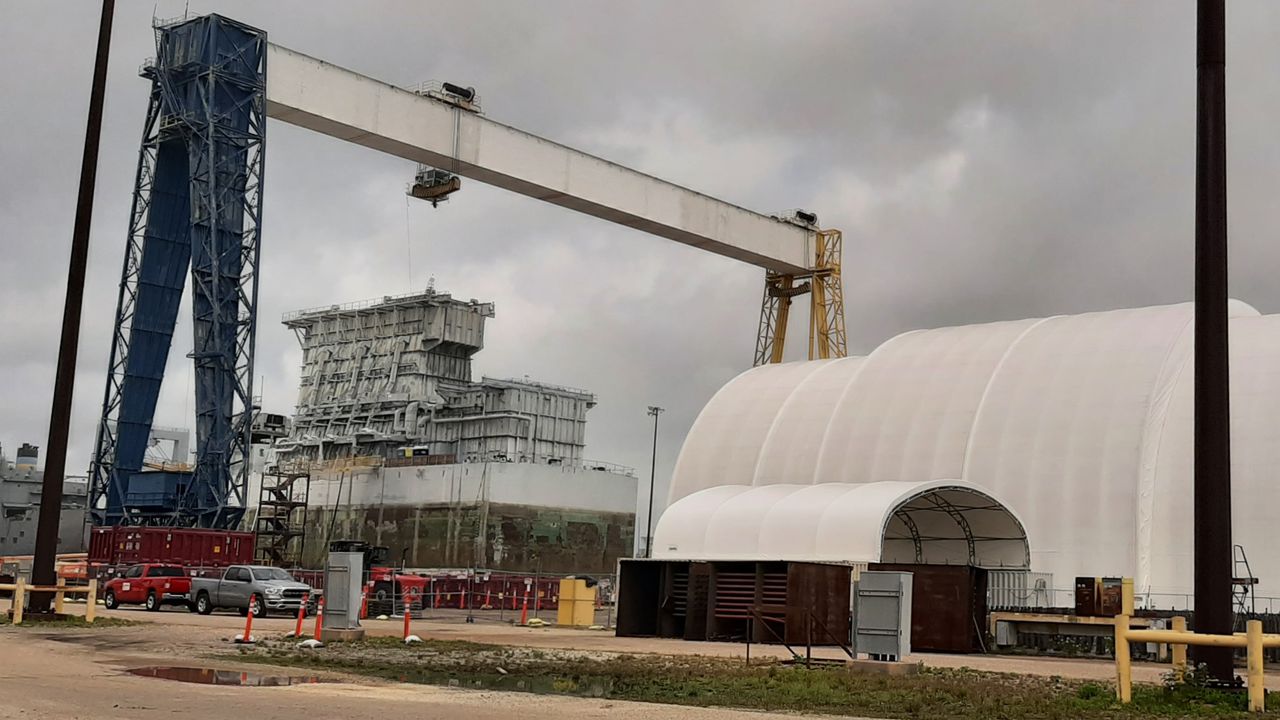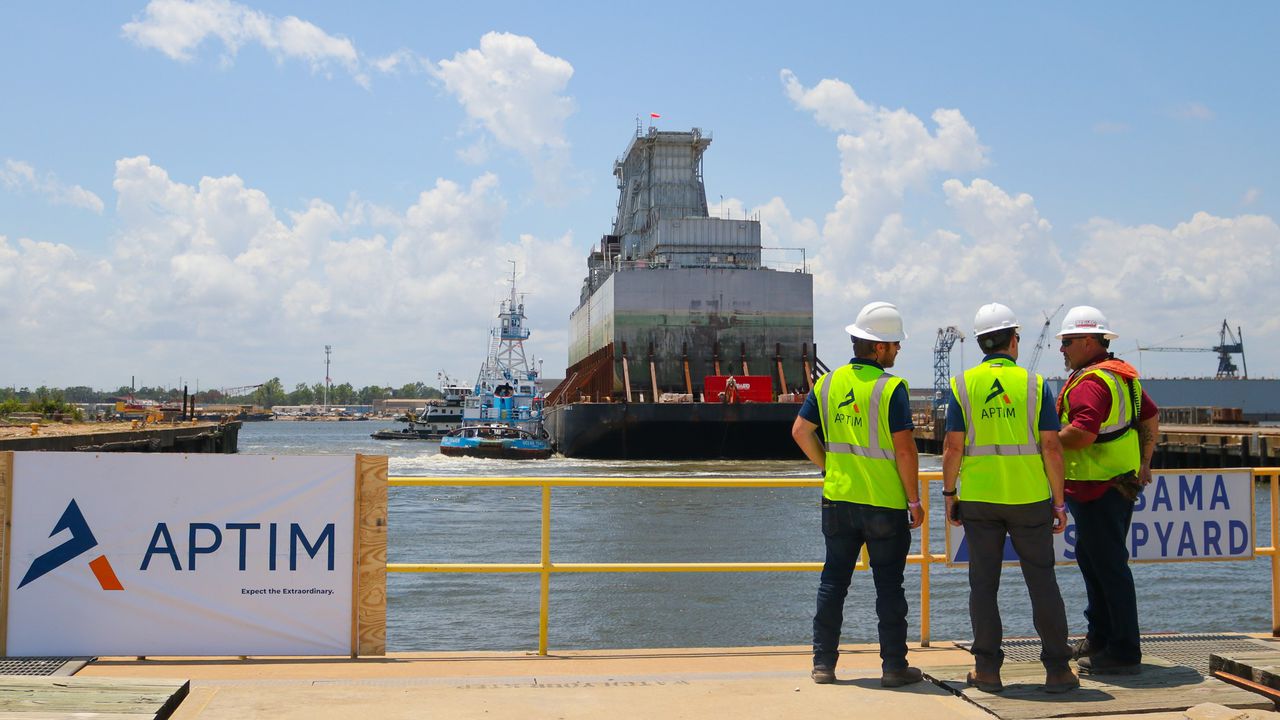Company tearing down nuclear fuel barge in Mobile says job almost done
The company disassembling a Navy nuclear refueling barge at a Mobile shipyard reports that it has reached a major milestone in the process.
The remains of the U.S. Navy Surface Ship Support Barge (SSSB) have been a part of the Mobile waterfront skyline since June 2021, when it arrived at Alabama Shipyard, where APTIM Federal Services LLC had arranged to carry out the three-year, $129 million project to break it down.
The whole vessel, about 270 feet long and more than 100 feet tall, was shifted onto land. During a visit to the shipyard in spring 2022, it was observed sitting partly under a 275-ton crane, with one end extending under huge tent-like structure that enclosed the portion being cut apart.
A Navy vessel called the Surface Ship Support Barge, used to refuel nuclear-powered ships and dismantle spent fuel units, arrived in Mobile on June 1, 2021. It will be scrapped in a three-year process.Lawrence Specker | [email protected]
The SSAB was not a nuclear-powered vessel, but it was used to transfer components during the dockside refueling of other ships’ reactors. According to the Navy, there was no nuclear fuel aboard the SSSB when it was brought to Mobile and work to reduce residual contamination had been underway since at least 2004. Plans called for APTIM to remove “all hazardous and radiological materials following proper disposal regulations. The majority of the waste from the project will be disposed of at Waste Control Specialists’ facility in Andrews, Texas.”
APTIM announced Tuesday that it has “completed the removal of the major sources of radioactivity, without incident or spread of contamination.” These include the former spent water pool at the heart of the vessel, also referred to as the “wet pit.”
A Nuclear Regulatory Commission document describes the wet pit as an area where “underwater fuel handling and refueling operations were conducted,” with stands holding “new and spent fuel assembles as they were received, removed, replaced, reconfigured and shipped.” it was shielded on four sides and its bottom by concrete and at times by water “introduced into void spaces around and below the pit.” APTIM’s Tuesday announcement said that taking out the pit required workers to break down about 2,500 tons of steel-reinforced concrete.
“The removal of the SSSB’s wet pit is a major milestone in its dismantlement and disposal, but an even greater accomplishment is the safety performance executed by our Program Manager Bruce Fox and his team,” said APTIM Senior Vice President of Nuclear Decommissioning Dave Lowe. “They worked more than 204,000 safe work hours in a hazardous environment without sustaining a single Occupational Safety and Health Administration recordable or lost time incident. We look forward to completing this one-of-a-kind project and performing future work of this nature with the U.S. Navy.”

A major project under way at Alabama Shipyard in spring 2022 was the disassembly of a Surface Ship Support Barge used by the U.S. Navy to refuel nuclear-powered vessels. The barge, at left, is positioned on land at a large crane used to lower sections as they are cut off. Inside the white enclosure at right, the large sections are broken down for recycling or disposal.Lawrence Specker | [email protected]
According to APTIM, the SSSB began life as a World War II Navy T2 tanker built by Alabama Drydock and Shipbuilding Co. Alabama Shipyard occupies what previously was ADDSCO property, meaning the hull is being broken down more or less at its birthplace. The enclosure around the work is specially fabricated for radiological work, APTIM said, and environmental monitoring verified there was no impact on the surrounding environment.
APTIM’s announcement said the company plans to be done with the project in June. “The SSSB worksite is planned to be fully released from radiological controls for unrestricted use upon meeting strict radiological standards and approval from the Navy; after which, it will be returned to Alabama Shipyard,” it said.
APTIM said that the “completion of this project, under a first-of-its-kind interagency agreement … will provide a model for potential future defueled nuclear-powered vessel decommissioning and disposal.”
Mobile has been mentioned as a possible site for the dismantling of the nuclear-powered carrier Enterprise. The ship was deactivated in 2012 and decommissioned in 2017, and its eight reactors have been defueled. The U.S. Naval Institute News reported in summer 2022 that the Navy would like a commercial yard to dismantle the ship starting in 2025 since it can’t get to it in its own facilities until 2030. The project would take five years and cost $554 million to nearly $700 million.
According to that report, Mobile was under consideration along with Brownsville, Texas, and Hampton Roads, Va., for the job. A decision has not yet been announced.
